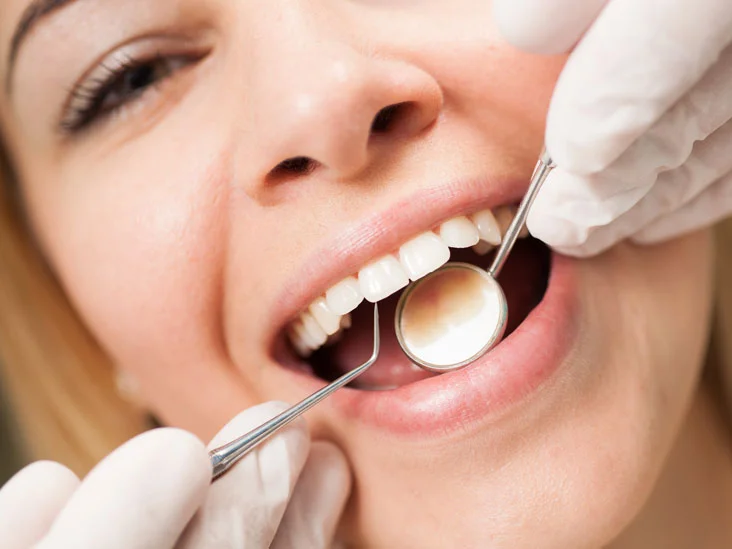You might think your teeth are clean and healthy, but they could look much better with regular dental cleanings. These preventative procedures remove plaque buildup and tartar between your teeth. Plaque is a sticky hardened substance that coats the surface of your teeth, while tartar accumulates in crevices between teeth and allows bacteria to thrive. These substances can build up excessively and cause tooth decay and gum disease. To improve your oral health and the appearance of your smile, consider having an Oasis Dental cleaning every six months. Learn more about dental cleaning and what to expect during and after each cleaning session.
What Is Dental Cleaning?
A dental cleaning is a non-surgical procedure that helps maintain oral hygiene by thoroughly and professionally cleaning your teeth and gums. It allows your dentist to look for possible signs of tooth decay, periodontal diseases, oral cancer, and other dental health problems. The procedure lasts approximately 30 minutes to an hour and ensures your teeth are free from hardened plaque, tartar, and bacteria.
How Often Should You Get Your Teeth Cleaned?
Having regular dental cleanings twice a year is the recommended time frame for most people. However, this time frame might vary depending on your oral health. For instance, if you have periodontal disease or tooth decay, you should have regular dental cleanings every three to four months.
Remember, the goal is to ensure your teeth and gums stay healthy so that you can keep a healthy smile. Also, if you have braces or other orthodontic treatments, consider getting your teeth cleaned at least every two or three months.
What Are the Benefits of Regular Cleanings?
Regular dental cleanings are beneficial for your overall health. They can prevent cavities, gum disease, and bad breath. They also help keep your teeth looking white, which is important for those self-conscious about their appearance. Dental cleanings can also help prevent tooth loss due to cavities or tooth decay. They can also help determine whether you are at risk of developing oral health issues later in life.
What Should You Expect During Your Appointment?
During your dental cleaning appointment, your dentist will conduct a visual and oral exam to look for signs of oral disease, plaque, and tartar buildup. They will also check the health of your bite by using a device known as an occlusal plane indicator.
Afterward, your dentist will use a scaler to remove plaque and tartar between your teeth and gums. After your teeth are free from bacteria and tartar, they will polish them using toothpaste and a specialized electric brush.
The final step involves flossing, rinsing, and applying fluoride treatment to your teeth. Flossing helps locate the blind spots in your teeth that might cause gum bleeding. Rinsing helps eliminate debris in your mouth, while fluoride treatment protects your teeth for months.
After Your Cleaning
After your cleaning, it is important to maintain good oral health. Brushing and flossing are essential components of good oral health. Also, avoid eating or drinking for at least 30 minutes after treatment. Since your teeth will be sensitive after a dental cleaning, avoiding hot or cold foods and drinks is best. While doing our routine dental cleaning, gently use a soft-bristled toothbrush and brush.
Regular dental cleanings are a crucial part of your oral health. They can prevent cavities and gum disease from forming, which means fewer visits to the dentist, greater comfort for you, and less money spent on treatments. Whether you need a simple check-up every six months or more often, depending on your needs, do not hesitate to schedule an appointment with your dentist. They will help you understand how dental cleanings work and how you can maintain the results. They will also offer a step-by-step guide on what each treatment process entails.

